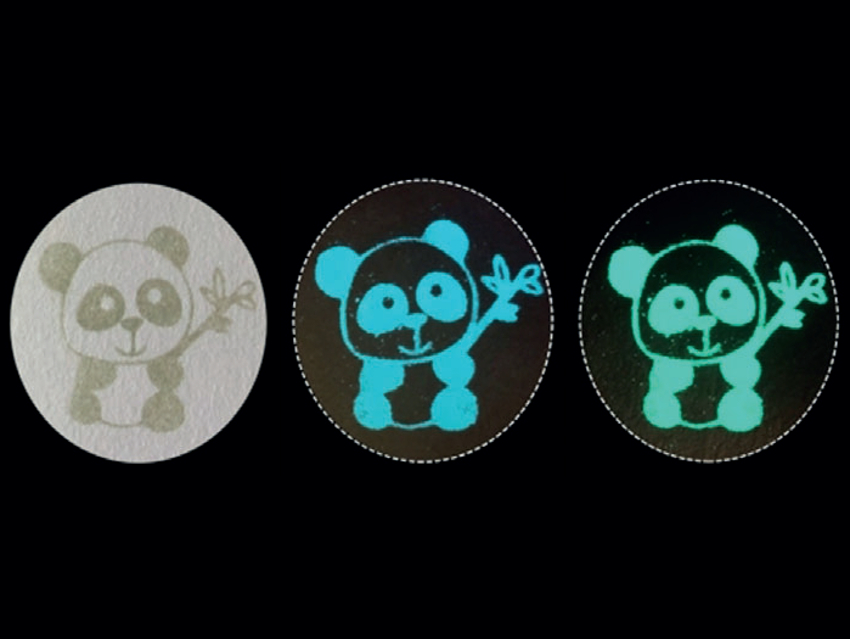Materials with photoluminescence properties that depend on the excitation wavelength could have applications in bioimaging, optoelectronics, anti-counterfeiting, etc. However, realizing this phenomenon in a single molecular compound is challenging.
Yong Chen, Technical Institute of Physics and Chemistry, Chinese Academy of Sciences, Beijing, and colleagues have synthesized two chiral gold complex double salts of the type [Au(NHC)2][Au(CN)2] (pictured below; cations in blue, anions in red) using the chiral N-heterocyclic carbene (NHC) ligands (4R,5R)- or (4S,5S)-1,3-dimethyl-4,5-diphenyl-4,5-dihydroimidazolin-2-ylidene. This bulky ligand has been designed to tune the noncovalent Au–Au interactions within the ion pair and, thus, the material’s photophysical properties.
In doped polymer films or in a ground powder, the chiral double salts are in an amorphous state and show strong excitation wavelength-dependent circularly polarized luminescence. Their emission colors change from blue to green (pictured above) when the excitation wavelength is increased from 300 to 400 nm. The ligand’s steric hindrance plays an important role in modulating the metal–metal distance, and the peak emission wavelength depends on the Au–Au bond distance.
This manipulation of metallophilic interactions could open up a new avenue for the development of smart photofunctional materials. The team demonstrated possible anti-counterfeiting applications for the salts by silk-screen printing patterns that change their luminescence.

- Controlling Metallophilic Interactions in Chiral Au(I) Double Salts towards Excitation Wavelength-Tunable Circularly Polarized Luminescence,
Jian-Gong Yang, Kai Li, Jian Wang, Shanshan Sun, Weijie Chi, Chao Wang, Xiaoyong Chang, Chao Zou, Wai-Pong To, Ming-De Li, Xiaogang Liu, Wei Lu, Hong-Xing Zhang, Chi-Ming Che, Yong Chen,
Angew. Chem. Int. Ed. 2020.
https://doi.org/10.1002/anie.202000792




